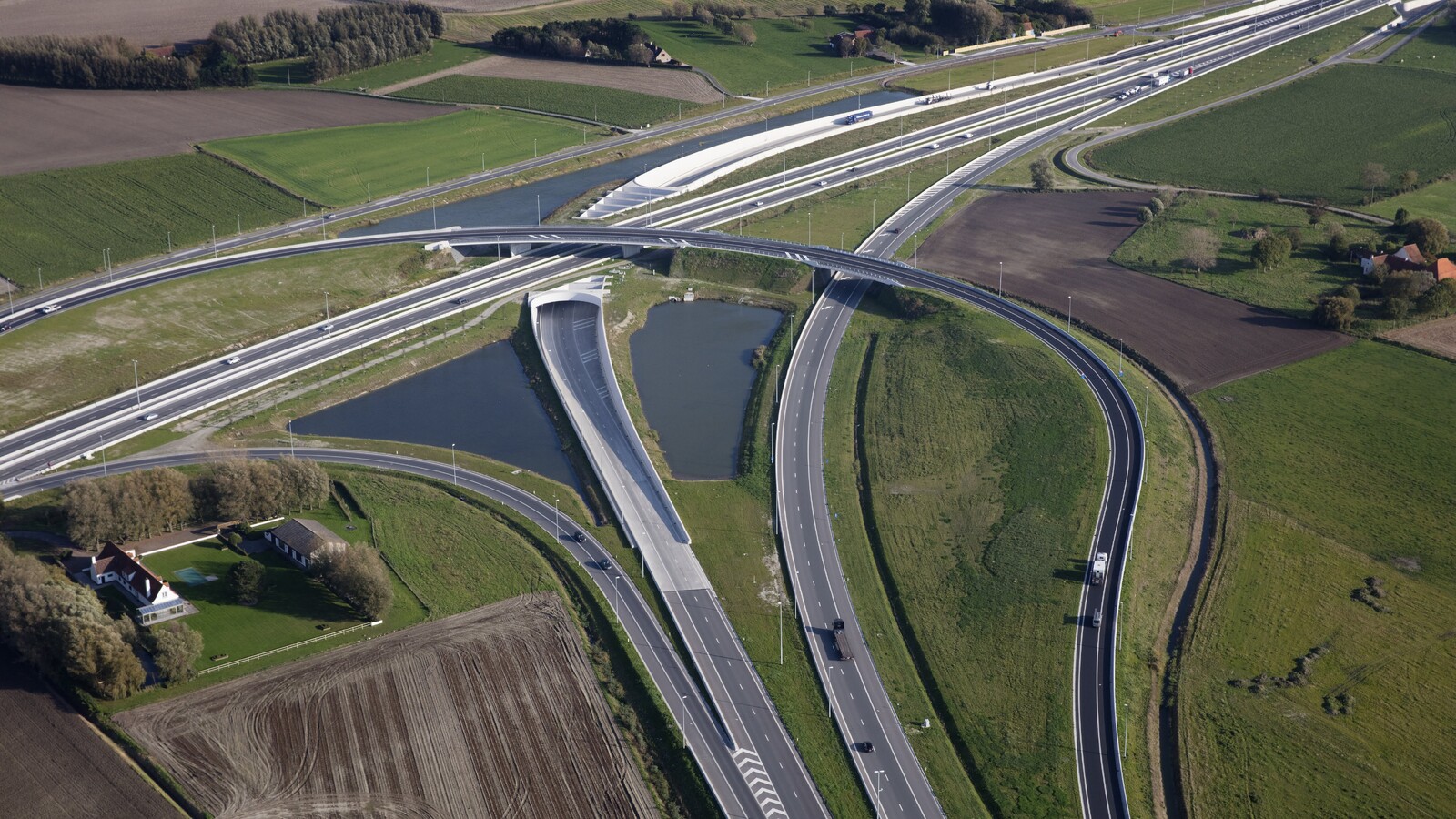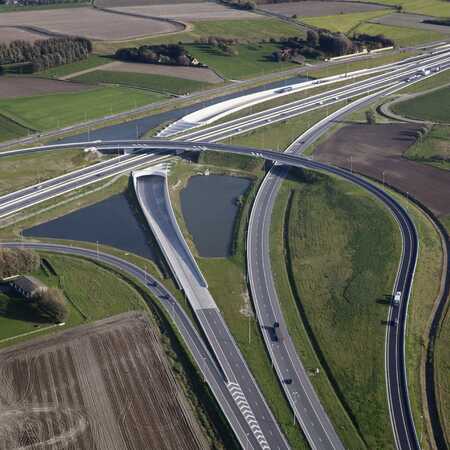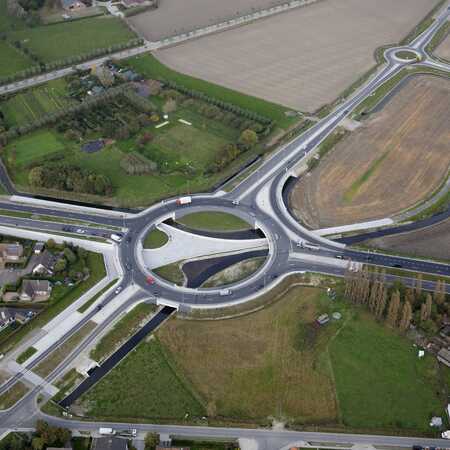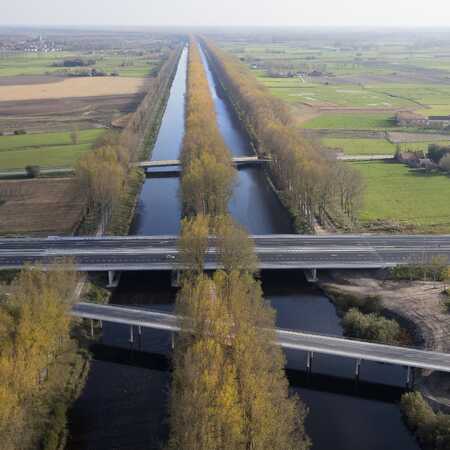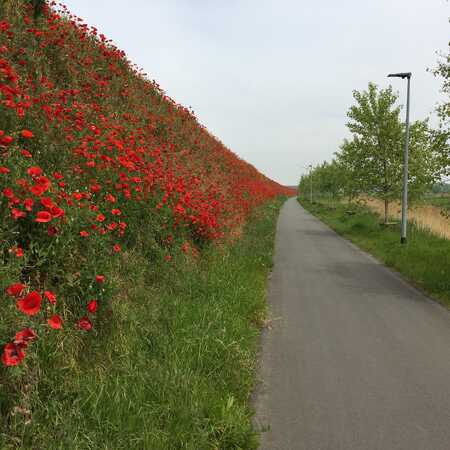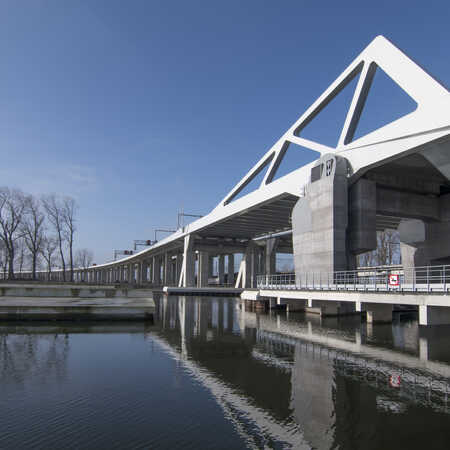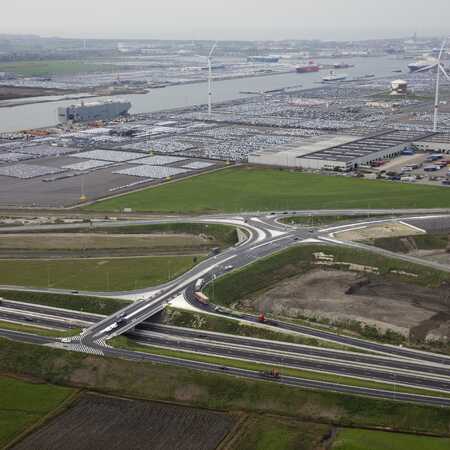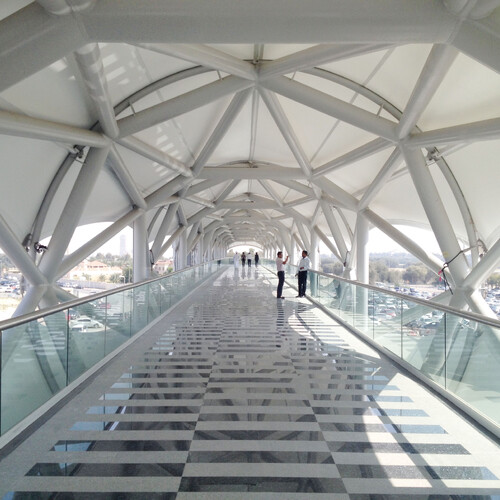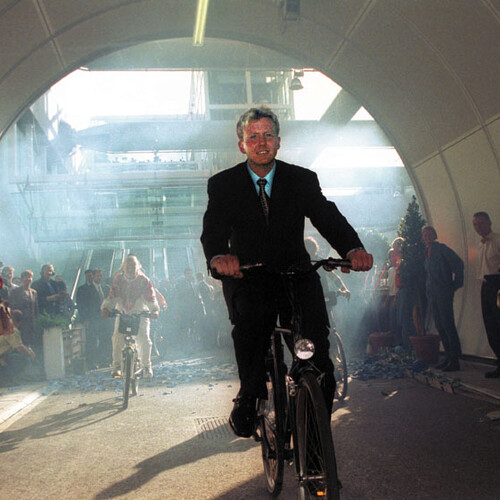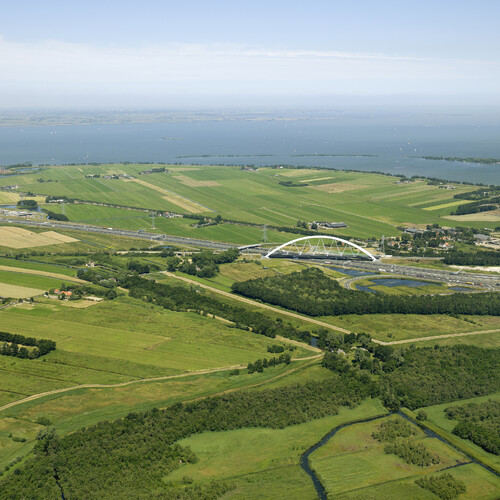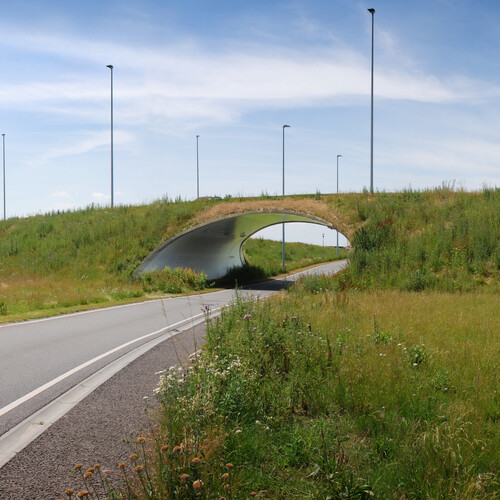The integrated approach
Between Bruges’ seaport and the city of Bruges itself we find the famous polder landscape of Western Flanders. Villages and farm fields, intersected by ditches, rivers and canals, are surrounded by the expanding port, industrial complexes and motorways. The architectural studio ZJA and landscape architect Bart Smets provided the design and concept for the integration of the new A11 motorway along with all its civil engineering works that connect the hinterland directly to the seaport of Zeebrugge.
The basic principle in this was an integrated approach, aiming for an optimum in several ways and prioritizing the beneficial coherence of all elements involved. A four-lane motorway, featuring an elevated roundabout, tunnels, a long fly-over and several bridges all could end up forming a huge barrier separating villages and ruining the landscape. In this design however local roads that had disappeared were reconstructed, new connections were built and 15 kilometres of new bicycle path was introduced. So despite the construction of the motorway, the region becomes more accessible and more attractive for residents and visiting hikers and cyclists.
The motorway is designed to adjust itself to the surrounding landscape as much as possible. At intersections the road is deepened, partially in covered tunnels and otherwise through an open trench with receding walls. The landscape is also reinforced by growing shrubs on the perimeter of the port, planting willows and elm trees along the secondary roads, and by a slender and high fly over with a large span to ensure the view over the polder remains intact.
By respecting ecological connections, the diverse functions of waterways and the fluctuations in water levels through the seasons, the A11 has a minimum disturbance on the existing countryside. Driving along this comfortable and safe connecting motorway between port and hinterland offers an attractive spatial experience, combining an overview of the old landscape with the sensation of being a part of it.
Two types of bridges
Where the motorway crosses the Boudewijn Canal a movable bridge, parallel to the railway bridge, enables the largest inland ships to reach Bruges. The new bridge has a split deck, as does the long viaduct that takes the road to an elevation of 15 meters. The design of the bridge in which the horizontal lines dominate is light and slender. In the vertical elements, a pattern of various triangles in white steel turn the bridge into a characteristic landmark.
The long viaduct that leads the traffic onto the bridge pushes the limits of technical possibilities to reduce visual disturbance as much as possible. The columns are only 80 centimetres wide and stand 35 meters apart. These proportions were only made possible by pouring the concrete of the columns and the deck at the same time, fixed together. Quite a feat, creating a rare open view of the landscape.
The other bridge shows how a narrow road for local traffic crossing a canal (in this case the Leopold and Schipdonk Canal) requires a completely different approach. The new road to Heist crosses the canal over a bridge with a deck as slim as possible, featuring receding edges, supported by round, slender columns positioned under a slight angle. From a distance one notices that the measures and rhythm of those columns echo the poplars alongside the canal. A sophisticated visual rhyme that makes the bridge appear even lighter.
A curious roundabout
Near Westkapelle, where the A11 ends and connects with the N49, a roundabout sorts the traffic to Antwerp, Sluis and Knokke-Heist respectively. To reduce the impact on the area it is elevated, so as not to interfere with the local roads, bicycle paths and waterways. The waterway that winds its way under it will have high water levels in winter and spring, and with the space left to anticipate that, a wadi like area is created.
Miraculously the roundabout forms no obstacle at all for cyclists, there is plenty of room to pass and change direction. The underpasses have receding and bright walls, allowing a maximum of daylight to enter and thereby reducing the feeling of passing through a tunnel. Being so close to the water, with a view of the fringe of reeds and the polder, crossing the motorway under the roundabout leaves the experience of cycling through the polders of West Flanders intact. Hikers and local traffic still find the old road there, taking them along the stream, by the farms and through the fields, bordered by elm trees rustling in the sea breeze.
Awards
Double movable bridge over the Boudewijn Canal: Nominated for the Steel Award Belgium 2018
Architect: ZJA
Client: Via A11 NV
Principal: THV EPC Via Brugge (JAN DE NUL, VAN LAERE, Willemen Infra, ACLAGRO en Franki Construct)
Consultant: Sweco Belgium
Landscape architect: Bureau Bas Smets
Year: 2017
Project: #647
Photographs: Sweco Belgium, Agentschap Wegen en Verkeer, Infosteel and MTC Via Brugge
